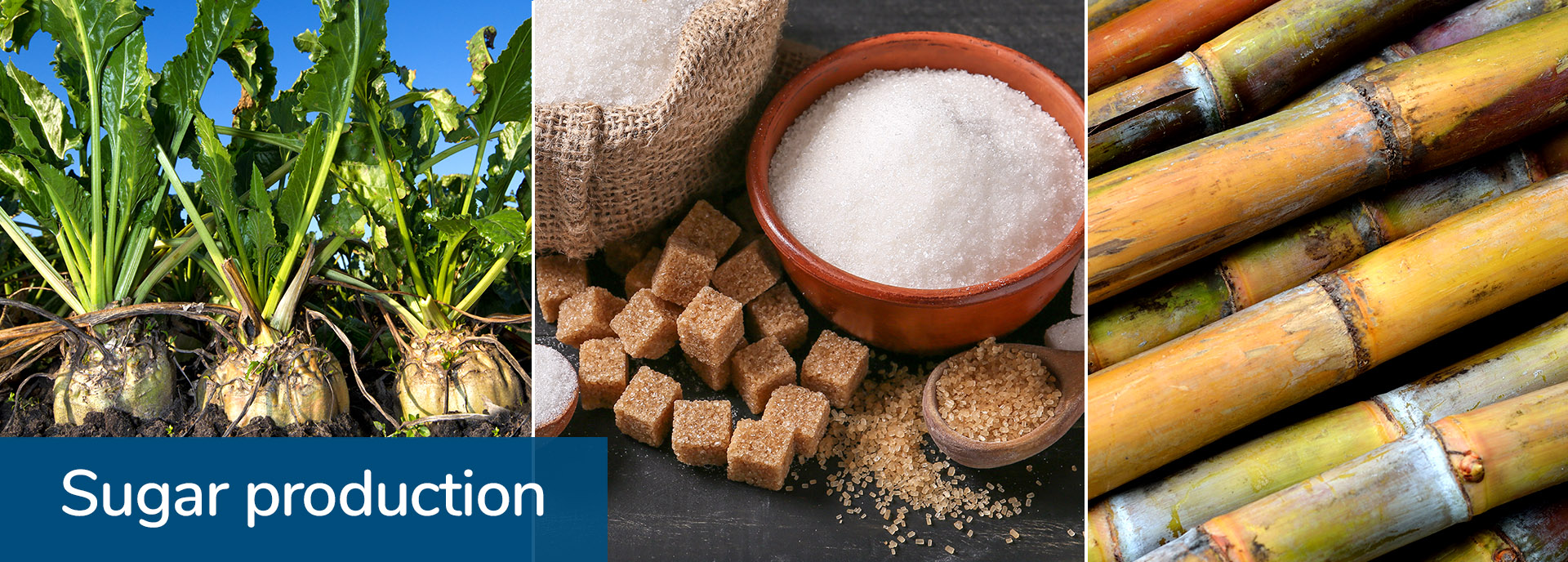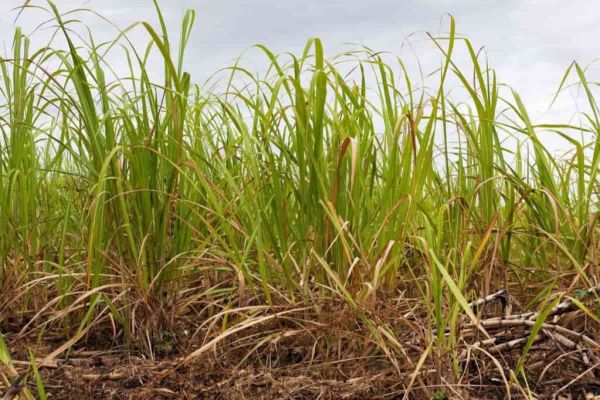The Complex Uses of Sugar Walking Cane: From Food Products to Biofuels
Sugar Cane is a crop with diverse applications that expand much past simple sugar. Its items vary from granulated sugar and molasses to fermented liquors and lasting product packaging products. In addition, it contributes in the manufacturing of sustainable biofuels. Understanding these diverse uses exposes the ecological and financial importance of sugar Cane cultivation. The implications of its growing methods increase inquiries worth exploring further.
The Function of Sugar Cane in Sweetener Manufacturing
Although sugar Cane is usually linked mainly with its sweet taste, it plays an important duty in the manufacturing of numerous sweeteners worldwide. The process begins with drawing out juice from sugar cane, which is after that made clear and vaporized to create raw sugar. This raw sugar undertakes further improvement to create granulated sugar, widely made use of in households and industries. In addition to traditional granulated sugar, sugar Cane is also the resource of molasses, a thick syrup that is and retains many nutrients used in baking and food preparation.
Sugar Cane offers as the structure for producing different sugar like high-fructose corn syrup and certain man-made sugar, which are increasingly prominent in food and drink manufacturing. The flexibility of sugar Cane in sweetener production not only pleases customer need for sweet taste but additionally supports different food sectors, highlighting its significance beyond simple taste.
Sugar Cane in Food Products Beyond Sweeteners
Sugar Cane offers various dietary benefits that extend beyond its role as a sugar. Its flexibility in cooking applications has actually brought about cutting-edge uses in a variety of food products, enhancing flavors and structures. This expedition highlights the broader contributions of sugar Cane to the food industry.
Nutritional Conveniences of Sugar Walking Stick
The nutritional benefits of sugar Cane prolong much past its popular duty as a sweetener. This flexible plant is rich in necessary nutrients, including calcium, potassium, magnesium, and iron. In addition, sugar Cane consists of anti-oxidants that help fight oxidative tension in the body. Its high fiber web content aids in digestion and advertises digestive tract health, making it a beneficial enhancement to the diet regimen. Additionally, sugar Cane juice is commonly consumed for its hydrating buildings and all-natural power increase, offering a source of fast carbohydrates. The visibility of phytonutrients adds to its health benefits, possibly sustaining immune feature. Generally, sugar Cane offers a series of nutritional advantages, adding to a health-conscious and well balanced way of life.
Culinary Developments and applications
While commonly acknowledged largely for its sweetness, sugar Cane has become a cutting-edge active ingredient in various culinary applications past standard sugar. Cooks and food producers are significantly using sugar Cane juice and syrup to boost flavor profiles in savory dishes, marinates, and sauces. Its natural sweetness equilibriums spices and level of acidity, making it a functional element in international cuisines. Furthermore, sugar Cane fibers are finding their means into gluten-free flours, giving structure and dietary benefits. Innovative treats, such as sugar Cane sorbets and sweets, display its one-of-a-kind flavor, while beverages like sugar Cane mixed drinks and teas highlight its invigorating qualities. These cooking developments demonstrate sugar walking cane's potential to transform modern gastronomy.
The Production of Alcohols From Sugar Walking Cane
Changing sugar Cane into liquors showcases the convenience of this tropical crop. The fermentation of sugar Cane juice or molasses leads to an array of preferred drinks, including cachaça, rum, and aguardiente. These beverages are deeply rooted in the cultures of sugar-producing areas, specifically in the Caribbean and South America.
The production procedure starts with the removal of juice from fresh gathered sugar cane, which is then fermented utilizing yeast. This fermentation converts the sugars into alcohol, generating a base that can be distilled for greater alcohol web content. Distillation techniques differ, affecting the taste profiles and attributes of the last product.
Furthermore, aging in barrels can improve the intricacy and deepness of flavors in spirits like rum. In general, the improvement of sugar Cane right into alcohols not only highlights its agricultural significance however likewise adds substantially to the worldwide drink sector, using abundant and diverse experiences for consumers.
Sugar Cane and Its Usage in Biodegradable Product Packaging
Sugar walking cane's adaptability expands beyond beverage manufacturing to cutting-edge applications in naturally degradable packaging. This renewable source is increasingly being used to produce environment-friendly product packaging options that minimize dependence on petroleum-based plastics. Acquired from the coarse deposit of sugar walking stick, called bagasse, suppliers can create eco-friendly products that decay faster than standard plastics.
These sugar cane-based product packaging items offer a sustainable option for various sectors, including food and consumer products. They not only decrease environmental effect however additionally line up with the growing customer need for lasting techniques. In addition, sugar Cane product packaging can be engineered to keep resilience while being light-weight, making certain that it fulfills the useful demands of organizations.
As environmental problems escalate, the change in the direction of eco-friendly materials, such as those stemmed from sugar walking cane, presents an encouraging course toward sustainable packaging services that contribute to a circular economic climate.
Checking Out Sugar Cane as a Sustainable Biofuel
As the globe seeks renewable resource resources, sugar Cane emerges as an appealing prospect for lasting biofuel manufacturing. This functional plant can be transformed into ethanol, a cleaner-burning choice to nonrenewable fuel sources - What Is Sugar Cane Used For. The fermentation process uses the sugars drawn out from the cane, causing a sustainable power source that significantly decreases greenhouse gas exhausts contrasted to conventional gas
Sugar cane's high energy yield per hectare additional improves its feasibility as a biofuel. It can be grown in numerous climates, making it easily accessible for several regions, especially in subtropical and exotic locations. Furthermore, the byproducts of sugar Cane handling can be used in generating electrical power, adding an additional layer of sustainability to its use. The adoption of sugar cane-based biofuels not just visit site advertises power independence her latest blog however likewise sustains farming economic climates. Subsequently, sugar Cane stands apart as a sustainable service in the global shift in the direction of renewable resource.
Nutritional Perks of Sugar Cane and Its Byproducts
The possibility of sugar Cane extends beyond its function in sustainable biofuel production; it also supplies considerable dietary benefits. Rich in necessary nutrients, sugar Cane gives important minerals such as potassium, magnesium, and calcium, which contribute to general health. In addition, its juice is an all-natural source of antioxidants, aiding to fight oxidative anxiety in the body.
Sugar Cane results, such as molasses, further enhance its dietary account. Molasses is high in iron, making it an important enhancement for those looking for to improve their iron intake. Both sugar Cane and its byproducts have dietary fiber, which aids digestion and promotes a healthy gut.

The Environmental Impact of Sugar Cane Farming

On the other hand, the cultivation process can cause various environmental difficulties. Logging usually occurs to make method for sugar Cane areas, which interferes with ecological communities and biodiversity. Additionally, the heavy use chemicals and plant foods can lead to dirt destruction and water contamination, influencing local wild animals and communities. The intensive irrigation required in some areas can diminish water sources, leading to deficiency.

Frequently Asked Questions
How Does Sugar Cane Affect Dirt Health And Wellness Throughout Farming?
The growing of sugar Cane substantially influences soil health. It can enhance dirt framework and fertility with organic issue enhancement, however excessive usage of plant foods may lead to vitamins and mineral deficiency and soil degradation over time.
What Are the Economic Conveniences of Sugar Cane Farming?
The economic advantages of sugar Cane farming include work development, increased neighborhood income, and payments to national GDP. In addition, sugar cane's convenience enables varied market chances, boosting farmers' monetary security and promoting farming development.
Can Sugar Cane Be Grown in Non-Tropical Areas?
Sugar Cane can be cultivated in non-tropical areas, provided the climate is adequately warm and frost-free. What Is Sugar Cane Used For. Adjustment techniques, such as choosing ideal varieties and utilizing irrigation, can improve its development potential in these areas
What Conditions and pests Impact Sugar Cane Crops?
Bugs such as sugarcane borers and aphids, along with illness like red rot and corrosion, substantially impact sugar Cane crops. These dangers can lower yield and quality, requiring reliable management techniques her response for farmers.
Exactly How Is Sugar Cane Harvested and Processed?
Sugar Cane is commonly harvested by cutting the stalks close to the ground. After gathering, the Cane is transported to processing facilities where it is squashed to remove juice, which is then refined into various products.
Sugar Cane is a crop with diverse applications that extend far beyond easy sugar. The procedure starts with removing juice from sugar cane, which is then made clear and vaporized to generate raw sugar. Innovative desserts, such as sugar Cane sorbets and candies, showcase its special taste, while drinks like sugar Cane cocktails and teas highlight its invigorating high qualities. The presence of vitamins, specifically B vitamins, in sugar Cane supports power metabolic process and overall wellness (What Is Sugar Cane Used For). On one hand, sugar Cane is an eco-friendly source that can add to lasting agriculture and offer biofuels, decreasing reliance on fossil gas